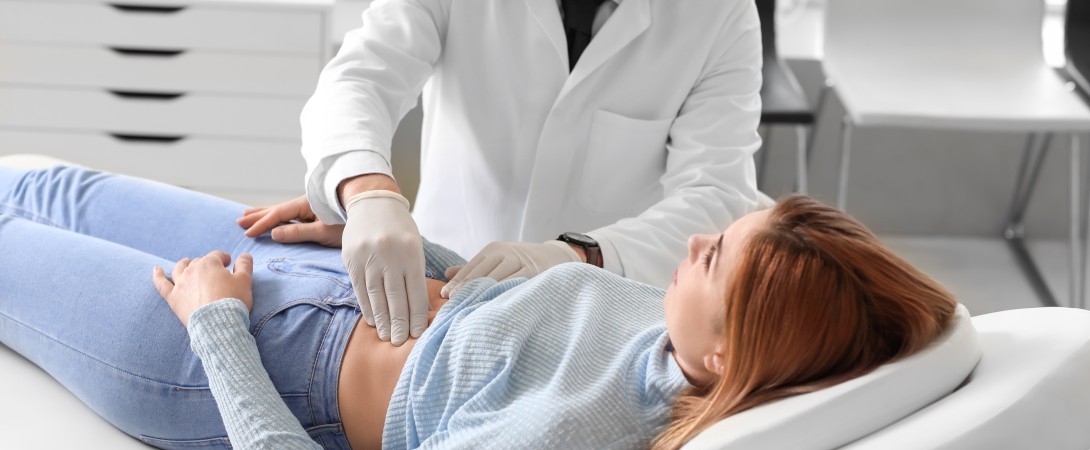What women know (and don't know) about their vaginal microbiota International Microbiota Observatory - 2023 results
The Biocodex Microbiota Institute commissioned Ipsos to conduct a major international survey of 6,500 people in 7 countries (France, Spain, Portugal, U.S., Brazil, Mexico and China) to better understand people’s knowledge and behavior with regard to their microbiota.
This exclusive survey reveals a general lack of understanding of the vaginal microbiota’s contribution to health, and underlines the essential role of healthcare professionals in teaching patients, in particular senior patients, about the role of the vaginal microbiota and the behaviors they should adopt to preserve it as well as possible.
1. Vaginal microbiota: a little-known organ
Only 1 in 5 women say they know exactly the meaning of the term “vaginal microbiota” (21%, vs 18% among overall results).
53% of women say they have never heard about vaginal microbiota, a proportion slightly lower than overall results (55%).
Only 1 in 2 women know what the vaginal flora is exactly (49%), a proportion slightly higher than overall results (40%).
Regarding the role and importance of microbiota in health, a large majority of women is aware that the vaginal microbiota acts as a barrier, protecting women from pathogenic microorganisms (67%) and that every woman has a vaginal microbiota that is different from any other woman’s (60%).

The vaginal microbiota
Find out more...However, only 1 in 2 women know that the vagina is self-cleaning (52%) and that from childhood to menopause, a woman’s vaginal microbiota is changing/evolving (52%).
When it comes to specific knowledge regarding delivery, bacterial diversity or unbalanced microbiota, the level of knowledge plummets: only 1 in 3 women know that the vaginal microbiota bacteria are safe for the vagina of women (37%) and that bacterial vaginosis is associated with an imbalance in the vaginal microbiota (35%).
1 in 3 women are also aware that delivery (vaginally or cesarean section) has an impact on the newborn’s gut microbiota (30%).
Only 27% say they know that the vaginal microbiota is balanced when its bacterial diversity is low.
2. Inappropriate behaviors to protect their vaginal microbiota
Faced with questions designed to assess their knowledge of the right behaviors to adopt in order to protect the health of their vaginal microbiota, the interviewees gave a relatively low average score of 2,8/5.
85% adopted the good behavior of wearing cotton underwear but a moderate proportion of women have adopted specific behaviors to protect the health of their vaginal microbiota.
Almost 1 in 2 women say they take vaginal douches (45%) whereas it's bad for their vaginal microbiota.
Only 41% say they have taken probiotics and/or prebiotics (either orally or vaginally).

What exactly are probiotics?
Find out more...
3. Information provided by healthcare professionals is still too rare but is needed!
Fewer than 1 in 2 women say that their doctor has ever explained to them how to maintain a balanced vaginal microbiota or educated on the importance of preserving as much as possible the balance of their vaginal microbiota.
Finally, only 1 in 3 said their doctor had ever taught them what the vaginal microbiota was and what it was used for (35%, and only 14% had had this explained to them several times).
86% of women surveyed said they would like to have more information about the importance of the vaginal microbiota and its impact on health.

4. Real differences depending on the profile of the people surveyed: women aged 60 and over are the least aware in terms of knowledge
Even though they are at an age when health problems linked to aging will, for many of them, become increasingly present, women aged 60 and over are the least aware in terms of knowledge.
Only 40% of them know what vaginal microbiota is (vs 47% among all women).

Focus: Women and their microbiota
Find out more...Women aged 60 and over are the least likely to know about the vaginal microbiota, with an average score of knowledge of 3,3/8 (vs 3,6/8 overall). For instance, less than 1 of 4 women aged 60 and over (23%) know that the vaginal microbiota is balanced when its bacterial diversity is low (vs 27% overall).
Regarding the adoption of appropriate behaviors to keep their vaginal microbiota balanced, women aged 60 are (along with the less than 25 yo age group) the ones that have adopted the least correct behaviors.
Less than 1 in 2 women aged 60 and over is using a soap-free cleansing solution (49%, vs 52% overall).
Only 1 in 4 women aged 60 and over said their doctor had ever taught them what vaginal microbiota was and what it was used for (29% vs. 35% overall).
90% of the 35-44 years old group said they would like to have more information from their healthcare professionals about the importance of the vaginal microbiota and its impact on health.
Only 79% of the 60+ age group would like to have more information (vs 86% overall).

On the other hand, the 25-34 and 35-44 age groups have the highest levels of knowledge about what people need to know and do to preserve their vaginal microbiota.
For example, the 35-44 age group is much more familiar than others with the term "vaginal flora" (47% know exactly what it is vs. 40% overall).
The 25-34 age group is the best informed by their physicians. Almost 1 in 2 women were explained by their doctor what the vaginal microbiota is and what its purpose is (48% vs. 35% overall). A large majority of the 25-34 age group women (56% vs. 42% overall) said they received from their physician information about the good behaviors to adopt in order to maintain a good balanced vaginal microbiota.
The International Microbiota Observatory has also revealed striking contrasts between countries in terms of knowledge, behaviors, and information provided by healthcare professionals.
Methodology
The Ipsos Panel conducted a major online international survey involving 6,500 individuals, surveyed between March 21 and April 7, 2023 in 7 countries: the United States, Brazil, Mexico, France, Portugal, Spain and China.
Data was collected using the quota method, which is the most commonly used sampling plan for obtaining a representative sample of a study population. The quota variables for each country were:
- gender
- age
- region
- socio-professional category
The survey population included 48% men and 52% women. The average age was 46.9 years. The sample of 6,500 individuals allowed a detailed analysis by age group: 18-24, 25-34, 35-44, 45-59, 60 and over.
The 26-question included:
- socio-demographic data
- assessment of knowledge of the microbiota
- the level of and desire for information from healthcare professionals
- identification and adoption of behaviors aimed at combating microbiota imbalance
- women’s level of knowledge, information and behavior with regard to the vulvovaginal microbiota
- health data
Recommended by our community
"Nice" -@_MohdHussain (From Biocodex Microbiota Institute on X)


